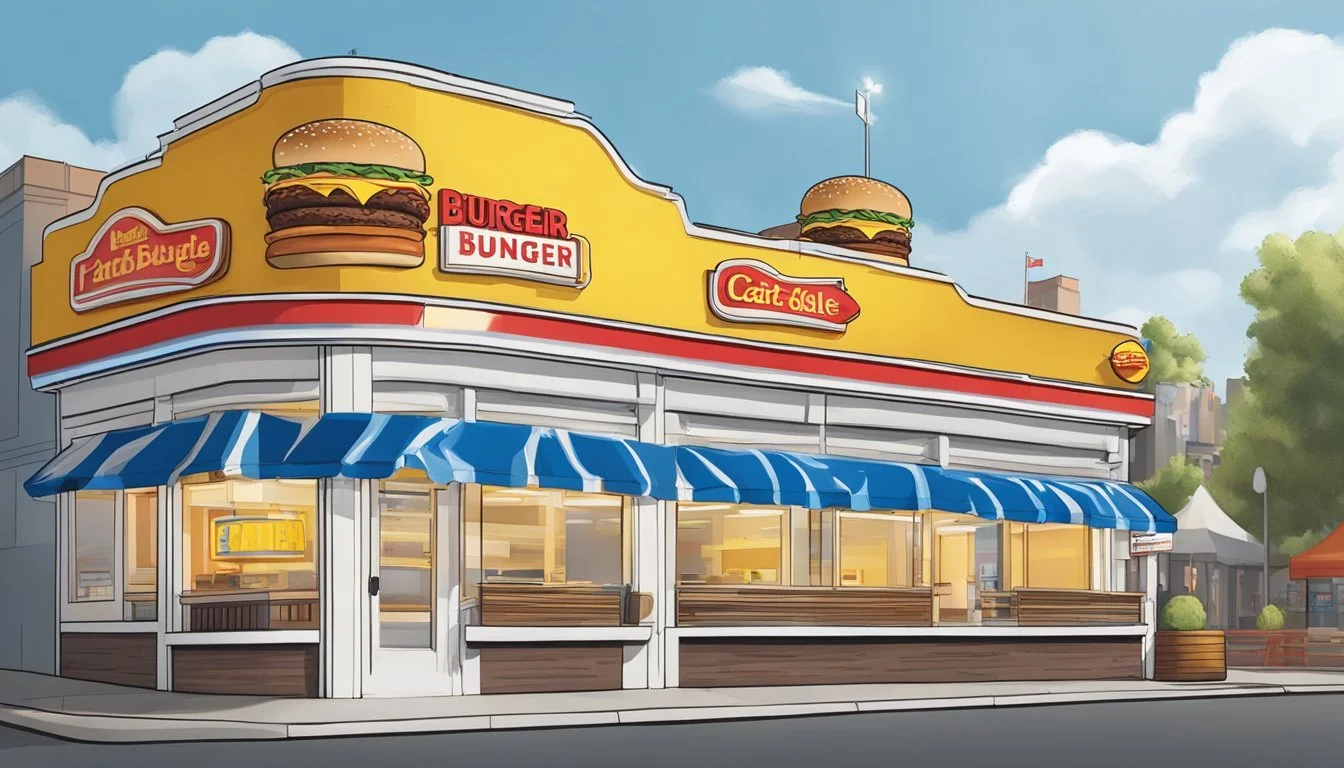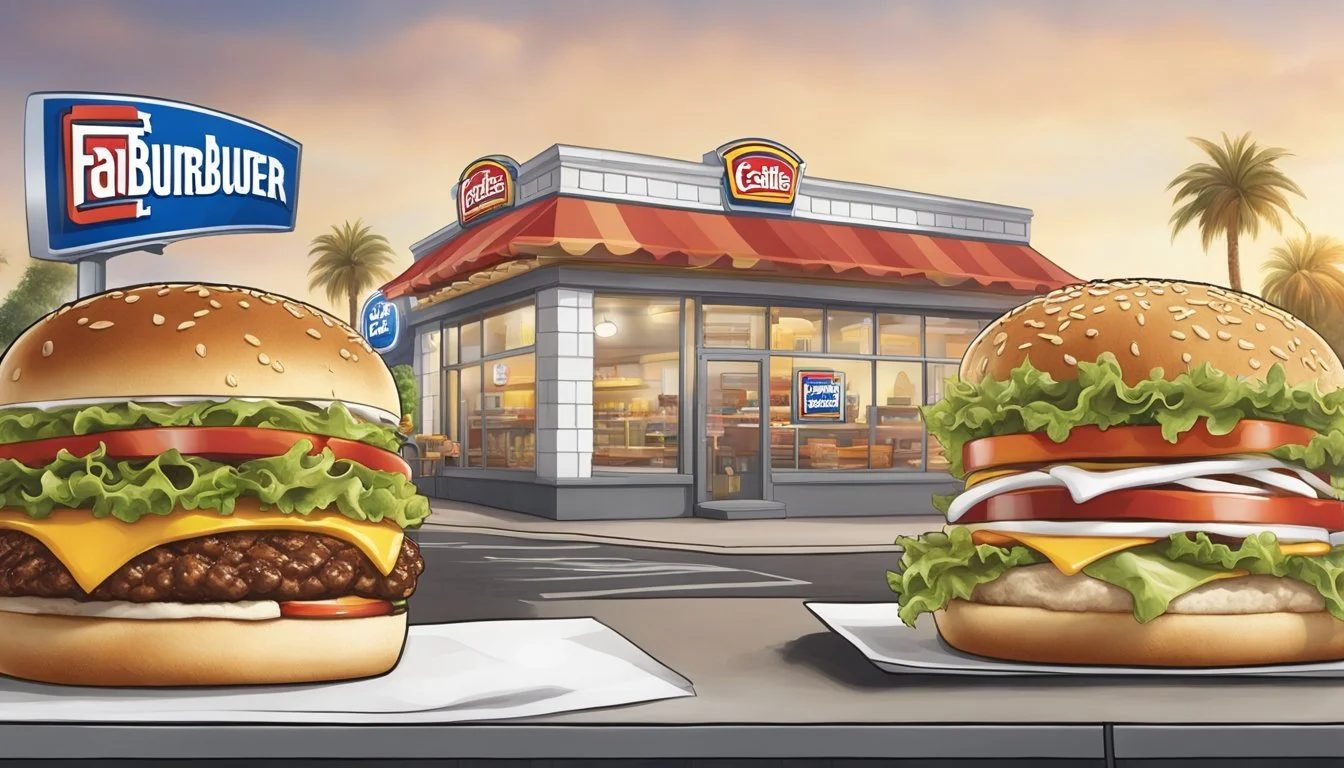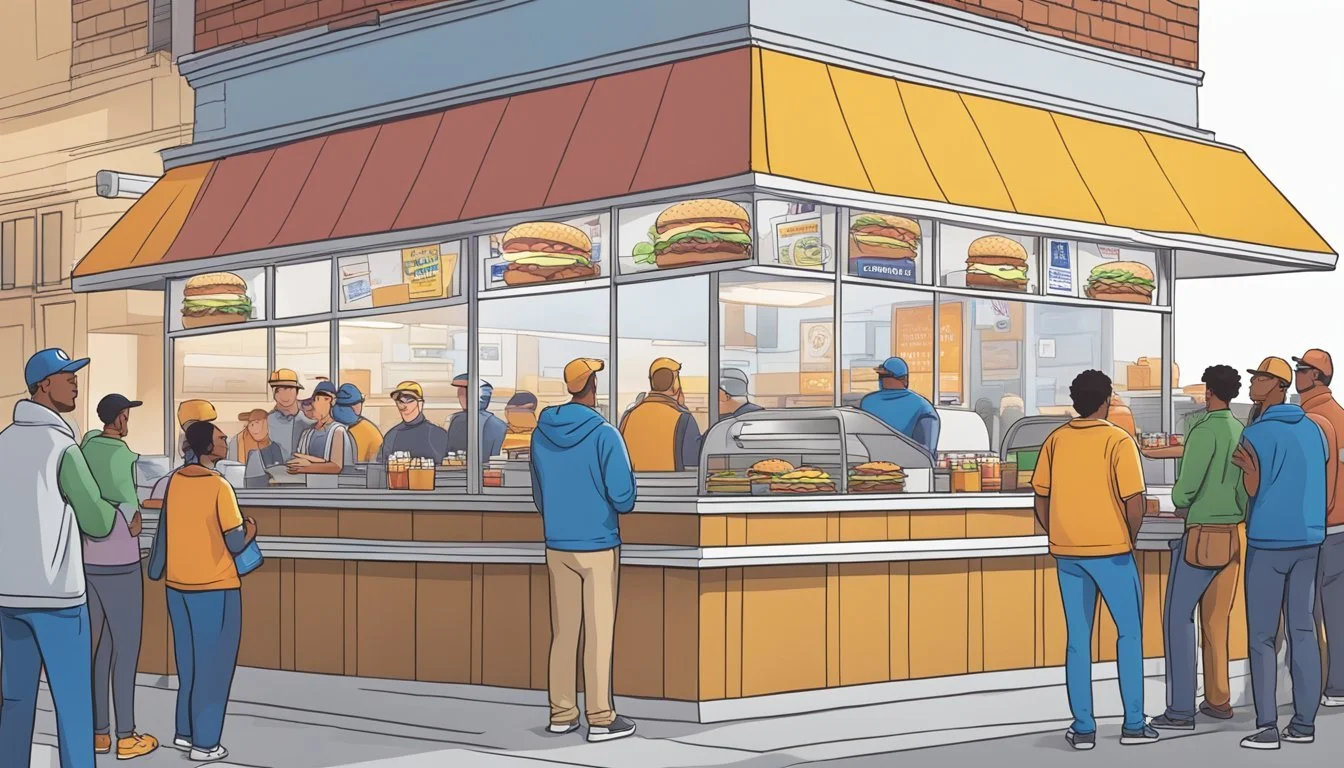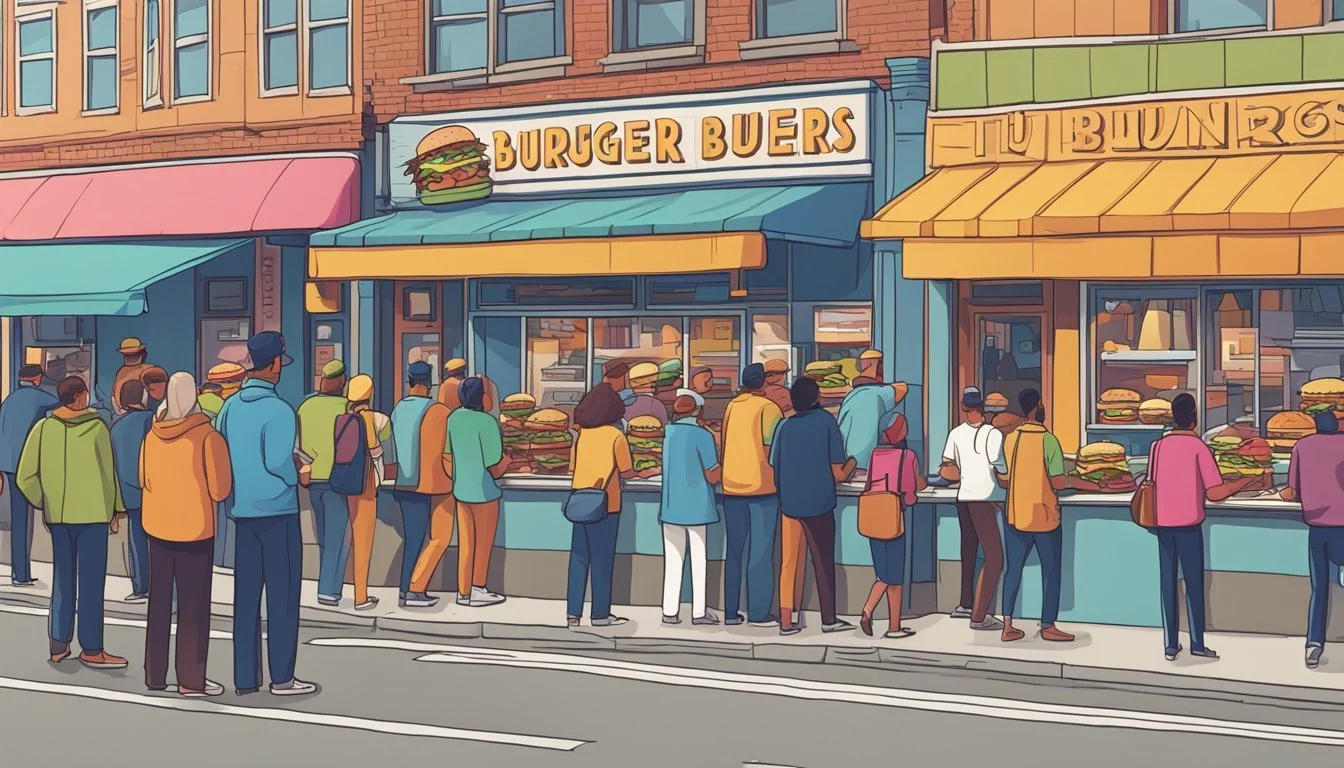White Castle vs. Fatburger
Comparing Burger Quality and Customer Experience
In the landscape of fast-food burger chains, White Castle and Fatburger stand out for their distinctive approaches to serving up the classic American hamburger. White Castle, recognized as one of the pioneers in the fast-food industry, has built a formidable legacy with its small, square sliders. These bite-sized burgers are known for being simple yet satisfying, with the Cheese Slider being a particularly balanced option for those looking for a quick protein-packed snack.
Fatburger, on the other hand, offers more substantial offerings. Their burgers, particularly the eponymous Fatburger, are made with lean beef and are often described as voluptuous, signaling a more indulgent and hearty experience. The Fatburger reflects a commitment to flavor and fullness, with a variety of toppings that allow for a customized burger experience.
While White Castle's sliders may be petite next to Fatburger's larger patties, both burger joints have developed a loyal following. White Castle's appeal lies in the nostalgia of a classic, no-frills burger that has remained largely unchanged over the decades, whereas Fatburger caters to those seeking a premium and more tailored fast-food burger. The decision on which is better largely depends on what consumers value in their burger experience: tradition and efficiency or customization and size.
History and Background
In comparing White Castle and Fatburger, it's essential to consider their unique histories, which shaped the trajectory of the fast-food hamburger industry.
White Castle's Legacy
White Castle holds the esteemed title of being the first fast-food hamburger chain in the United States. It was established in 1921 in Wichita, Kansas, with the founders' intention of changing public perceptions of hamburgers, which at the time were considered low-quality street food. This enterprise not only succeeded in elevating the status of hamburgers but did so during a challenging economic era, the Great Depression. Their model emphasized affordability and cleanliness, with an open kitchen design that reassured customers about the food's safety. White Castle's impact was profound; it laid the groundwork for standardized menu items and influenced countless other fast-food establishments.
Founding Year: 1921
Original Location: Wichita, Kansas
Contribution: Standardized the fast-food concept
Fatburger's Beginnings
Fatburger started its journey in Los Angeles, California in 1947. Founded by Lovie Yancey, it began as a small hamburger stand called "Mr. Fatburger," with the "Mr." later being dropped. From its inception, Fatburger aimed to serve up fresh, made-to-order burgers—a principle that has remained a core element of their identity. Although Fatburger began as a regional chain, it has since expanded domestically and internationally, emphasizing fresh ingredients and large, filling portions, as suggested by its very name. Unlike White Castle, Fatburger entered the market after the Great Depression and leveraged California's growing appeal as a haven for entrepreneurs during the mid-20th century.
Founding Year: 1947
Original Location: Los Angeles, California
Unique Selling Proposition: Fresh, made-to-order burgers
Both chains have etched their names into fast-food history with distinctive branding and have withstood the test of time albeit taking different paths reflective of the eras they began in.
Menu Offerings Comparison
In comparing White Castle and Fatburger, one finds distinct menu options that cater to different tastes. White Castle's menu revolves around its slider offerings, while Fatburger is known for its full-sized hearty burgers.
Signature Items
White Castle is famous for its iconic sliders, specifically the Original Slider, which has been a staple since 1921. The Cheese Slider and Double Cheese Slider round out the favorites. Each features a steam-grilled beef patty with onions and pickle on a soft bun.
Fatburger, on the other hand, touts the Fatburger as its signature item. This large burger comes with a 100% beef patty, fresh lettuce, tomato, onion, pickles, mustard, mayo, and other condiments, served on a toasted bun. The emphasis is on a more traditional, full-size hamburger experience.
Variety and Options
When it comes to variety, White Castle offers a range of slider options that includes not only beef but also chicken, fish, and plant-based patties like the Impossible Beef. Limited-time offers like the Sloppy Joe Slider also add to the diversity of their menu.
Fatburger provides customers with a robust selection of toppings that are customizable for each burger, including fresh lettuce, tomato, pickles, grilled onions, grilled mushrooms, ketchup, mustard, and a variety of sauces. Cheeseburgers, double cheeseburgers, and the option to add additional patties allow customers to customize their burger's size and flavor profile.
Each chain provides a different approach to burgers – White Castle with its focus on small, diverse sliders and Fatburger with its emphasis on customizable, large-scale burgers.
Taste and Quality
When comparing White Castle to Fatburger, one must examine the distinctive flavor profiles and the freshness of ingredients each brand offers to understand their commitments to taste and quality.
Flavor Profiles
White Castle is renowned for its small, square-shaped sliders that offer a unique flavor combination. The burgers are steamed over onions, which imparts a moist, savory taste that's distinct in the fast-food industry. They are typically served with a slice of pickle, adding a tangy contrast to the mild beef and the soft buns.
Fatburger, on the other hand, prides itself on delivering a more traditional hamburger experience. Their signature burger, "the Fatburger", is a testament to this, featuring a thick, juicy beef patty characterized by a rich, hearty flavor. Their toppings, as indicated by the provided search results, include lettuce, tomato, mayonnaise, and mustard on a toasted bun, creating a complex flavor profile that balances freshness and savoriness.
Ingredient Freshness
The freshness of ingredients is a crucial component of a burger's taste and quality. White Castle's approach relies on the consistent texture and crispy onions, giving their sliders a reliable bite every time. However, the main focus isn't necessarily on the variety of fresh produce but on the uniformity of the sliders they serve.
In contrast, Fatburger emphasizes the use of fresh ingredients, which is a significant aspect of their menu appeal. The search results reflect Fatburger's commitment to freshness, noted especially for their offerings of a variety of toppings that customers can choose from, including freshly grilled onions and crisp lettuce. This dedication to fresh produce is indicative of their higher standard for ingredient quality.
Note to readers: This section is part of a larger comparison article and serves to evaluate and compare the "Taste and Quality" of White Castle and Fatburger's offerings.
Nutritional Content
In comparing White Castle and Fatburger, the nutritional content of their offerings reveals significant contrasts in caloric value, protein and fiber, as well as fats and carbohydrates. These components are essential in assessing the overall health implications of the burgers from these fast-food chains.
Caloric Value
White Castle: The classic Original Slider at White Castle comes in at a modest 140 calories per burger.
Fatburger: Their XXXL Triple Kingburger packs a hefty 1,859 calories, indicative of its larger size and richer composition.
The calorie count varies widely, with White Castle targeting lighter fare and Fatburger delivering a more calorie-dense option, which could be a meal in itself.
Protein and Fiber
White Castle: Each Original Slider contains 7 grams of fat and 6 grams of protein, but the fiber content is not commonly advertised.
Fatburger: Fatburger's options are not highlighted for their fiber content, but their larger burgers are expected to provide more protein due to their increased meat servings.
For those prioritizing protein intake, Fatburger's larger patties offer a more substantial amount, while White Castle keeps portions and protein more modest.
Fats and Carbohydrates
White Castle:
Saturated Fat: The saturated fat content is not explicitly noted for the Original Slider.
Carbohydrates: With 16 grams of carbs, it is a lower carbohydrate option when compared to other fast-food burgers.
Sodium: Each slider has 380 milligrams of sodium.
Fatburger:
Saturated Fat: Saturated fat content is higher due to the larger amounts of meat and cheese.
Carbohydrates: Not specified, but with the larger buns and potential additional toppings, carbohydrates are expected to be higher.
Sodium: Detailed sodium levels are not provided but, given the larger sizes and flavor profiles, sodium content is likely to be significantly higher than White Castle's offerings.
White Castle presents a more modest fat and carbohydrate profile, suitable for those seeking a lower-calorie, lower-sodium option. Contrastingly, Fatburger's larger, more indulgent burgers are higher in fats, potentially contributing to a higher saturated fat intake.
Price and Value
When evaluating White Castle versus Fatburger, cost efficiency and portion size are two significant factors that impact a customer's choice. These aspects are crucial in determining which burger joint provides better value for money.
Cost Comparison
At White Castle, the pricing point is typically lower. For instance, a Double Slider at White Castle is priced at $2.78, offering a more budget-friendly option. In contrast, while Fatburger's signature Fatburger does not have an exact-price reference in the provided data, it generally falls into a higher price bracket due to its gourmet-style offerings and reputation for premium ingredients.
White Castle
Item: Fatburger
Price: $2.78
Higher-end Specialty Burger
Price: $2.79*
Note: Premium pricing
* This refers to the Crispy Chicken slider price, used here as a comparative reference point.
Portion Sizes
White Castle is famous for its smaller, square-shaped sliders, which are designed to be both tasty and convenient but may be less filling for a larger appetite. Fatburger, on the other hand, offers more substantial burgers with a variety of toppings, which are often considered more satisfying and filling due to their larger sizes. The Fatburger is known for not just its quality but also its generousity, which corresponds with a more filling meal.
Brand Image and Presence
When comparing White Castle and Fatburger, their marketing strategies and cultural impact are integral to understanding their unique brand presence within the fast food industry.
Marketing Strategies
White Castle, self-proclaimed as the world's first fast-food hamburger chain, has capitalized on its long history since its inception in 1921. The company has nurtured a nostalgic brand image, emphasizing the originality of its sliders—a miniaturized version of the traditional burger. Known for their convenience, White Castle has diversified their presence by offering retail products that can be microwaved at home, allowing customers to enjoy their menu items beyond restaurant locations.
In contrast, Fatburger, established in 1952, presents itself more as a premium fast-food chain, focusing on large, customizable burgers. Its marketing emphasizes quality ingredients like lean beef and a wide array of topping options, distinguishing itself from other burger joints. Fatburger has also expanded globally, which bolsters its image as a versatile and upscale burger option.
Cultural Impact
White Castle has made a significant cultural impact, especially in the Northeast and Midwest, where it's often recognized as a regional fast-food icon. It has captured the hearts of its customer base through pop culture, most notably in films like "Harold & Kumar Go to White Castle," which solidified its cult status.
Fatburger's cultural footprint has been different. Positioned as a West Coast staple, Fatburger is part of the regional chains, which includes others like In-N-Out and Whataburger, that have achieved a certain cult following. They don’t have the nationwide ubiquity of competitors such as McDonald's, Wendy’s, or Burger King, but they boast a loyal customer base that values quality and larger burger servings. The chain has also permeated popular culture with mentions in songs and by having high-profile celebrity investors, which strengthens their brand image as a burger joint with star power.
Customer Experience
When comparing White Castle and Fatburger, the customer experience can be distinctly different. These nuances are particularly evident in service speed and the overall atmosphere and ambiance.
Service Speed
White Castle is renowned for its quick service model. Customers usually experience short waiting times due to the brand's focus on the efficiency of delivering its famous sliders. As a traditional fast-food establishment, White Castle's operations are optimized for speed, which is a key consideration for customers seeking a quick meal.
Fatburger, which falls under the fast-casual dining category, prides itself on preparing food to order. Consequently, the wait times can be longer compared to White Castle. However, the brand compensates for this with the promise of fresh and tailor-made burgers, which are a core appeal of the fast-casual dining experience.
Atmosphere and Ambiance
The atmosphere in a White Castle restaurant is typically straightforward and no-frills, aligning with the chain's historic image and fast-food identity. The ambiance is casual, aiming to get customers in and out quickly without much emphasis on a dine-in experience.
Fatburger's ambiance leans towards a more inviting dining experience, often featuring more spacious seating arrangements and music. The interior design choices reflect a blend of retro style and modern fast-casual sensibilities, aiming to make customers comfortable during their longer visit compared to a traditional quick-service burger joint.
Accessibility and Locations
When deciding between White Castle and Fatburger, it’s important to consider the regional availability and expansion efforts of both chains. They each hold a distinct presence in the United States, with varying levels of access depending on the location.
Regional Availability
White Castle is known as a regional chain, with a strong presence particularly in the Midwest and the New York metropolitan area. Despite being known for igniting America's burger craze, its geographical footprint remains more concentrated and has not reached a nationwide status.
Fatburger, on the other hand, has locations primarily on the West Coast and has also expanded to other regions such as the Southeast. It has even opened its doors to customers in Southern states such as South Carolina and has a noticeable presence in Florida, illustrating a broader scope in its regional availability.
Expansion and Growth
Both burger joints have experienced growth, yet their strategies differ. White Castle has remained relatively conservative, focusing on solidifying its iconic status within its established regions. It is not commonly found nationwide, which makes it something of a novelty outside its traditional areas.
Fatburger appears more aggressive with its expansion policy, continually growing within the United States and even globally. The burger joint’s expansion beyond the West Coast showcases its ambition to become a more recognizable brand across various markets.
In summary, White Castle caters to a more localized demographic, while Fatburger shows a pattern of wider geographic growth, seeking to capture the taste buds of burger enthusiasts far beyond its West Coast origins.
Side Items and Other Offerings
The battle of the burger joints doesn't stop with the patties—they extend to the realm of side items where both White Castle and Fatburger showcase their unique takes on classic and inventive accompaniments.
Fries and Onion Rings
White Castle serves a variety of fries, including the traditional crinkle-cut french fries which can be ordered plain or topped with cheese. Additionally, they have become known for their loaded fries featuring ingredients like bacon and cheese. Fatburger, on the other hand, offers skin-on fries as well as chili cheese fries loaded with their signature homemade chili. Both establishments use a blend of spices that give their fries a distinctive flavor.
Onion lovers can rejoice at both eateries. White Castle offers their iconic onion rings, which are a crispy and golden favorite. Fatburger's onion rings are cut thick, and coated with a seasoned batter that adds an extra punch of flavor.
Desserts and Shakes
Moving on to the sweeter side, White Castle and Fatburger both offer an assortment of desserts and shakes. White Castle's shakes come in classic flavors like vanilla, chocolate, and strawberry, but they also often feature seasonal specialities. Their desserts are usually simple, like their bite-sized brownies.
Fatburger's shakes, however, step into the gourmet level. They serve rich, hand-scooped ice cream shakes that are known for their thick and creamy texture. Fatburger also includes bacon in some of their desserts, bridging the savory-sweet divide for an unusual but flavorful twist.
Both chains put their unique spins on these offerings, ensuring there's something for every side and dessert enthusiast.
Consumer Reviews and Rankings
When it comes to consumer ratings and the standings of fast food chains, White Castle and Fatburger are notable names, each with a unique fan base. Reviews often reflect individual taste preferences, regional availability, and value for money.
Online Ratings
White Castle, known for its small, square sliders, garners a mix of responses depending on the platform. On a popular review aggregator, Yelp, White Castle averages around 3 to 3.5 stars across various locations. Google reviews are slightly more favorable, with ratings often between 3.5 and 4 stars.
Fatburger, praised for its thick and customizable burgers, shows a stronger online presence. Its Yelp ratings tend to hover around 4 stars. Similarly, Google reviews for many Fatburger outlets reflect a 4 to 4.5-star average.
Expert Opinions
In comparing expert opinions, rankings from culinary critics are instrumental. Food connoisseurs have often placed Fatburger among the higher echelons of burger chains, especially when it comes to the quality of ingredients and burger customization options.
White Castle, on the other hand, holds a unique position due to its cultural impact and longstanding history. Experts respect its significance in the fast-food industry, though it may not always hold a top spot in gourmet rankings. However, it consistently ranks well for its distinctive taste and nostalgic appeal.
Sustainability and Ethical Practices
When considering sustainability and ethical practices, it's crucial to evaluate how burger joints like White Castle and Fatburger source their ingredients and implement environmental policies. These factors are especially significant for consumers who prioritize ethical consumption.
Source of Ingredients
White Castle has set a clear precedent in the realm of ingredient sourcing. Through the ownership and operation of its own meat processing, bakery, and frozen-food processing plants, White Castle ensures a consistent quality across its product line. It takes pride in a transparent supply chain, and although not specified in the available information, such efforts can contribute to sustainability if they incorporate practices like using fresh and potentially grass-fed meat.
Fatburger's approach to ingredient sourcing accentuates freshness, with claims that each burger is cooked-to-order. While not explicitly stated, this suggests an implicit promise that ingredients are fresh and handled with care. However, the extent to which Fatburger sources from regional chains or adheres to grass-fed beef standards remains unspecified in the given context.
Environmental Policies
Assessing the environmental policies of any food chain requires scrutinizing their operational procedures and commitments to reducing their carbon footprint. White Castle's history and longevity in the market imply a responsibility towards adopting sustainable practices, yet the specific environmental policies they have in place are not detailed in the search results.
Fatburger, similarly, has not provided substantial public information regarding its environmental policies based on the data available. As the sources do not delve into Fatburger's sustainability initiatives, it leaves a gap in understanding their full commitment to environmental stewardship.
In summary, while both White Castle and Fatburger emphasize certain aspects of quality and freshness in their ingredients, the absence of detailed public information on their respective environmental policies makes it challenging to fully compare their sustainability efforts and ethical practices.
Comparison Summary
In determining the better burger joint between White Castle and Fatburger, one must consider various aspects ranging from menu variety, burger customization, and overall dining experience.
Pros and Cons
White Castle
Pros:
Known for its iconic sliders, which are small, square hamburgers.
Offers a unique burger experience with a focus on simplicity and speed.
Cons:
Limited burger customization options.
Some might find the burgers too small or the taste less indulgent compared to gourmet burger chains.
Fatburger
Pros:
Burgers at Fatburger are made with 100% lean beef, ensuring a healthier option.
Provides ample customization options, including a variety of toppings and sauces.
Cons:
The size and richness of Fatburger's offerings might be overwhelming for some.
Could be viewed as less convenient for customers seeking a quick, traditional fast-food experience.
Final Verdict
White Castle appeals to those desiring a quick, classic slider that is both affordable and has a unique taste profile. Fatburger caters to the customer looking for a more substantial and customizable burger experience. Each has carved out its own niche in the fast food world, making the choice largely a matter of individual preference.











